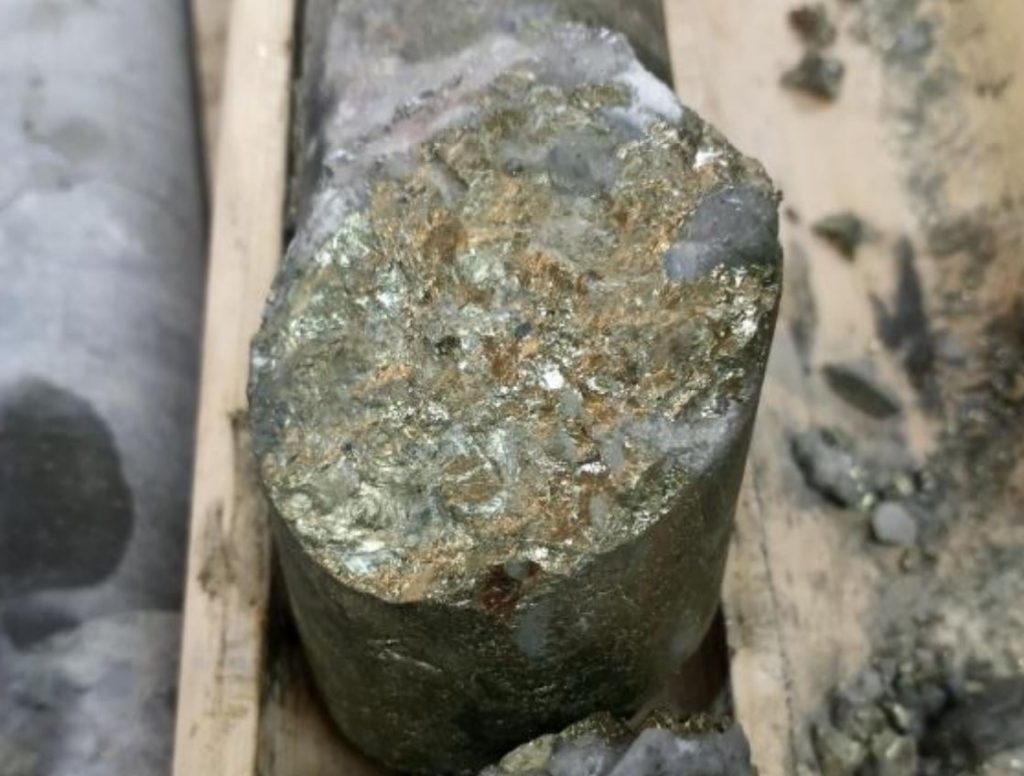Copper Road Resources drills visible copper at Copper Road, Ontario

Copper Road Resources Inc. [CRD-TSXV] has drilled broad intersections of visible copper mineralization at the highly prospective JR zone copper porphyry and breccia targets at its Copper Road project in Batchewana Bay, Ontario.
Highlights: At the Jogran porphyry target, both holes J-23-01 and J-23-02 intersected broad zones of copper mineralization (194 metres from 4 metres to 198 metres and 137 metres from 4 metres to 141 mietres, respectively). Mineralization is exhibited as chalcopyrite plus molybdenite plus or minus bornite plus pyrite plus pyrrhotite disseminations, and in quartz veinlets hosted in a quartz-sericite-pyrite (phyllic)-altered quartz monzonite porphyry.
At the Richards breccia target, two of four holes (R-23-01 and R-23-04) encountered wide intersections of copper mineralization (37 metres from 76 metres to 113 metres and 49 metres from 80 metres to 129 metres, respectively). The mineralization at Richards consists of chalcopyrite plus pyrite plus or minus pyrrhotite plus or minus chalcocite aggregates, disseminations and veinlets hosted in a chlorite-sericite-carbonate-pyrite-altered breccia.
John Timmons, President & CEO of Copper Road, commented: “We are eager to see the assays from the JR Zone, over the past year we completed 4,200 metres of diamond drilling and have established both the Tribag and JR Zones as large-scale at-surface Cu-Mo-Au-Ag targets. The JR Zone is in the centre of 30 km of mineralization with two past producing high grade copper mines, the Coppercorp to the southwest and the Tribag to the northeast.
“The company believes this region has the potential to deliver several much larger copper-dominant polymetallic deposits based on the extensive Cu-Mo-Au-Ag mineralization throughout this contiguous 24,000-hectare project.”
The company believes that the JR zone has a current footprint of copper mineralization that’s 1.5 km long and 550 metres wide (open) based on reconnaissance MMI soils lines and historical data compilation completed by the company.
The JR Zone is just one of several alkalic porphyry targets across the property, which also includes, among others, the former Tribag Mine, Con-Negus, and Gimlet Lake. The company currently compares these targets to well-known alkalic porphyry deposits and clusters in British Columbia, such as Galore Creek, Mt. Milligan, Mt. Polley, Afton-Ajax (Iron Mask) and Copper Mountain.
The Summer 2023 Drill Program: The JR Zone is located approximately 12 km southwest of the former Tribag Mine which the company drilled in 2022. The 2023 drill program tested the Jogran porphyry and Richards breccia targets which are approximately 1 km apart. The program consisted of 7 drill holes totaling 1,224 metres and was designed to test the extent and continuity of the mineralization encountered in previous historical exploration by Jogran Mines and Aurogin Resources. The company will release final assay results as they are received.
Two drillholes were completed at Jogran Porphyry. Drill holes J-23-01 and J-23-02 were located in the vicinity of historical drill holes JDH-13 and JDH-16 to confirm historical results near surface and to extend the mineralization at depth. Both recent drill holes intersected broad zones of copper mineralization (194 metres from 4 to 198 metres and 137 metres from 4 to 141 metres, respectively). Mineralization is exhibited as chalcopyrite + molybdenite plus or minus bornite + pyrite + pyrrhotite disseminations and in veinlets, hosted in a phyllic (quartz-sericite-pyrite) altered quartz monzonite porphyry.
Notably, the copper and molybdenum mineralization also extends into the mafic volcanic wall rocks with an increase in occurrence of bornite mineralization at depth from 315-346 metres (31 metres). The mineralization in the mafic volcanics is associated with localized and discrete zones of magnetite-biotite (potassic) alteration along a 121 metre stretch from 225-346 metres.
Five drillholes were completed at Richards Breccia and vicinity. Drillholes R-23-01 and R-23-04 tested the historical results of ARD98-07 and AR97-25 at depth and successfully extended the breccia 50 to 60 metres vertically below known mineralization.
Both drillholes R-23-01 and R-23-04 encountered wide intersections of copper mineralization (37 metres from 76 to 113 metres and 49 metres from 80 to 129 metres, respectively). Mineralization is exhibited as chalcopyrite + pyrite plus or minus pyrrhotite plus or minus chalcocite aggregates, disseminations, and veinlet fills hosted in a chlorite-sericite-carbonate-pyrite altered breccia.
Copper Road Resources will develop additional drill targets in the JR Zone after receipt and analysis of assays. The company also plans to advance the JR and Tribag Zones with robust semi-3D IP/MT surveys and additional MMI geochemistry soil lines, both to expand current targets and further delineate additional regional exploration targets for drill testing.
Copper Road Resources is exploring for large copper/gold deposits on the 24,000-hectare Batchewana Bay Project, 80 km north of Sault St. Marie, Ontario, Canada.
